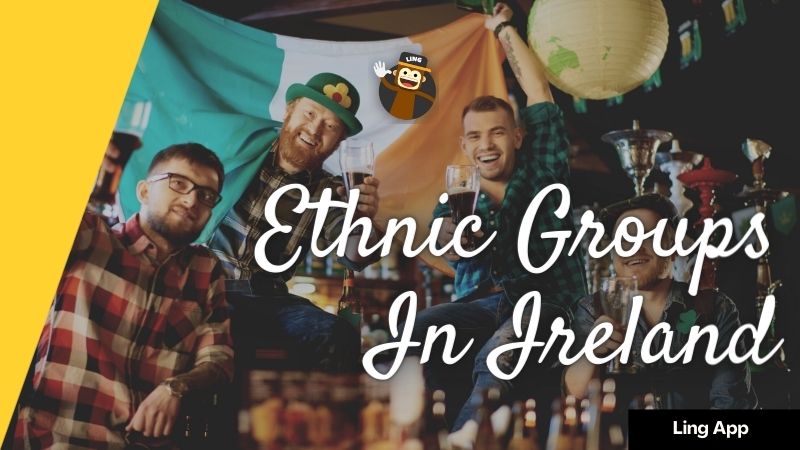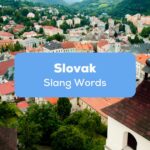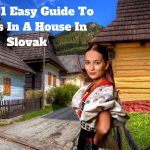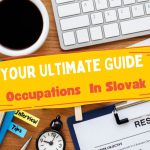Have you seen any nation more welcoming and friendlier than Ireland? I have not!
Isn’t it hard to believe? People who have visited Ireland would agree with the fact that it is far more welcoming for the visitors, be it travelers or migrants, or ethnic groups in Ireland that one could imagine. Still in distrust? Let’s go for some statistics.
Ireland is the sixteenth friendliest country according to Expat Insider’s Report of 2021 and the fourth most welcoming nation according to experts. The diversity of Irish ethnicity provides solid corroboration. The article will convince you that Irish people are welcoming to the extent that they hardly resisted the invasions and accommodated the ethnic groups.
Two Main Features
Before we dig into the information about the ethnic groups, we must try and look at some of the most common features of Irish people which are a result of diverse ethnicity and vice versa.
Ireland Being A Hospitable State
The Irish continue to be a hospitable, open-hearted, warm, and welcoming nation despite the global restriction on immigration. Ireland has been one of the most welcoming states in Europe, and thus still, its people are sympathetic to the expatriates.
Ireland is a diverse society and has accepted ex-pats from all over the world. This is one of the world’s friendliest nations, especially for travelers and emigrants. It has been declared the fourth most social country in the world.
Attractive Opportunities For The Immigrants
The open labor market and the globalized economy of Ireland add to the attraction of immigrants. People are attracted to the islands of Ireland because of its stable economy, the optimal working environment, and the opportunities in European countries added with the flavor of hospitality and accepting behaviors of the natives.
All these opportunities make the island suitable for visitors; therefore, they not only visit Ireland but prefer to board and reside there for good. These groups make up the ethnic minorities or the ethnic groups over time.
The Diversity Of Ireland
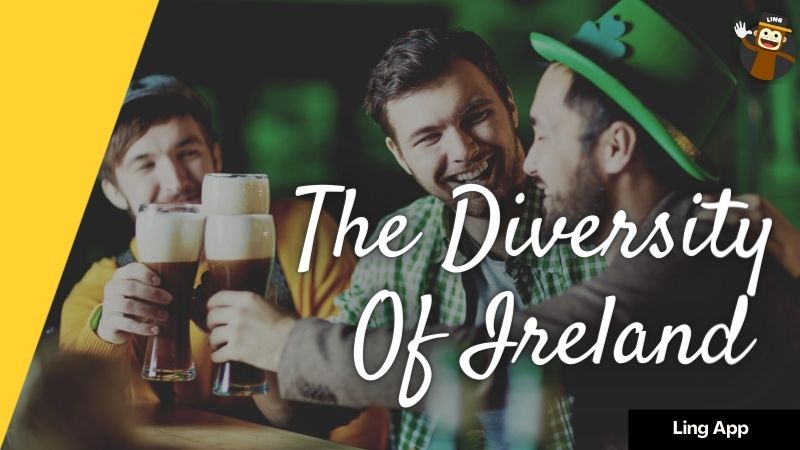
Ireland is a very diverse state comprising several residents from different countries who have established themselves as the ethnic groups and minorities of the state.
The history of Irish people, who have now found themselves as indigenous and natives, can be traced back centuries. The early invaders and migrants like Vikings, English, Romans, and the Celts have now become the natives and nationals of Ireland, generally termed whites.
There exist several ethnic groups and minorities in Ireland. The ethnic minorities make up more than fifteen percent of the Irish population, while the whites remain the largest ethnic group in Ireland, making up eighty-four percent of their people.
The other ethnic groups incl. black Irish (1.4%), Asians (3%), Irish travelers (0.7%), and minorities of mixed backgrounds make up 1.5% of the general population.
Invasions Of Ireland
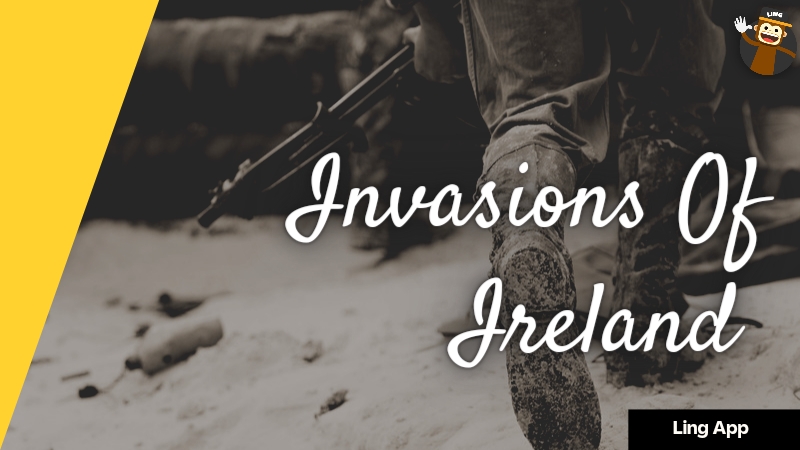
Like many other countries, especially the islands, Ireland is no exception and has seen many invasions during its centuries-long history. All significant charges influenced Irish society in many ways and more common ones became a part of its culture and ethnicity.
The people of Ireland have tried and succeeded to some extent in retaining and preserving their traditions, culture, and language. Still, many of these invasions, without a doubt, contributed to making the indigenous groups native to that land.
Some of the most prominent invasions made during the island’s history include those of Gaels, Romans, Vikings, and British.
The Gaelic Invasion Of Ireland
The Gaels were the subcategory of a larger ethnic group called Celts and also their last group. They invaded and then settled in northwestern Europe, including Ireland, 9000 years ago. Celts consisted of Gaels and the Brythonic people.
The influence of Gaels was to such a greater extent that they developed the techniques of farming, sailing, etc. They also started trade business with the Romans, the subsequent invaders of Europe.
Roman Invasion Of Ireland
The Gaelic people settled in Ireland and started becoming natives. There was also an incoming of Romans into Ireland in the 1st century CE. The Romans invaded England, but they did not directly colonize it. They took control of the Celts and other Europeans, like Scottish people but Irish people.
They traded with the Celts, including those residing in Ireland, because of the advanced and developed technologies in farming, sailing, and metals. As a result, they brought Christianity and the church into the state where people previously followed the Celtic religion.
Anglo-Normans Invasion Of Ireland
The age of Anglo Norman’s invasion was another impactful and profound annexation into the island.
Anglo-Normans invaded Ireland and the Scottish community in the eighteenth century. Anglo-Normans consisted of a group of French, Vikings, and English descent.
Vikings and English continuously invaded Ireland through the century and kept on settling in the land. They then married the Celts and other native ethnic groups of Ireland. These intermarriages laid the grounds for these ethnic groups to inhabit the land permanently.
The British Invasion Of Ireland
English people invaded the island again in the sixteenth and seventeenth centuries. This invasion was more like conquering the nation because this invasion set the stage for a large number of Scottish and English migrants to enter and settle in Ireland.
The island firstly became part of the English and then Britain. The conflict between the Catholic Irish and the Protestant Britishers continued in the later centuries until the division of Ireland into Northern Ireland and the Irish free state in the nineteenth century.
The impact of the British empire did not die away despite the conflicts. The seriousness of the influence can be driven by the fact that English is Ireland’s second official or national language after Gaelic and some from the Republic of Ireland. At the same time, the majority from northern Ireland call themselves whites or British people.
Ethnic Groups In Ireland
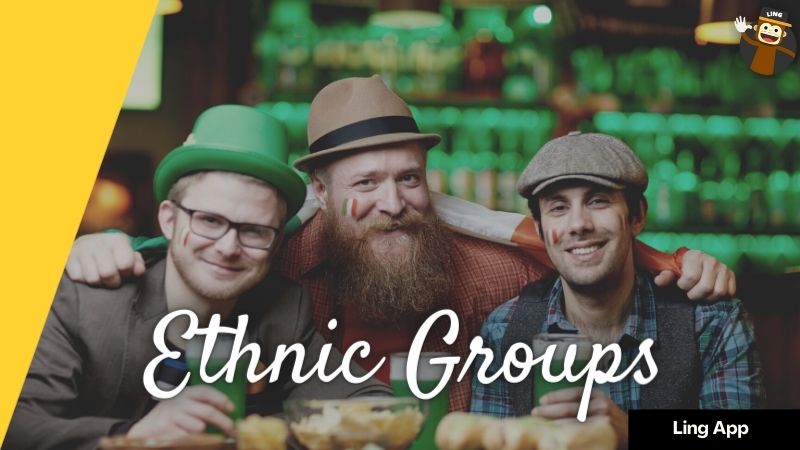
Now that you have discovered some useful information about the tiny bit of the ethnic history of the Irish people, you are ready to discover the major groups of Ireland.
1. Irish Travelers
Starting off with the Irish travelers. Irish travelers are an indigenous ethnic group of Ireland, but they did not get the status of being indigenous until March 2017. As the name suggests, it is a traveling community consisting of nomadic people distributed unevenly but majorly accommodating Dublin and Galway.
They call themselves and are generally known as Munseirs or Pavees. They have their traditions and culture, speaking the English language by the majority, but some also talk Shelta, i.e., a dialect of mixed Irish and English.
The number makes up 29,500 travelers making 0.6% of the population of Ireland in the 2011 census.
Irish Travellers Being The Indigenous Irish Ethnic Group
The ancestral origin of this ethnic group is Irish, but in the sixteenth century, they got separated from the mainstream population because of the Cromwellian conquest.
Though native to Ireland, this ethnic group remained distant from the other mainland Irish communities, and this centuries-long separation made them genetically distant and distinct from the mainland Irish.
The marked separation also led to several discriminatory and stereotypical thoughts regarding the group. Thus, discriminatory treatments and continued inattention lead to many problems like lack of education, poverty, poor health conditions, increased rate of disability, and many other factors.
The low life expectancy has grabbed the attention of local authorities and the Irish government, who are now taking steps to improve their living conditions.
2. Black Irish
The people of this ethnic group are the descendants of black or people of color who have been residing in Ireland since the eighteenth century. Most of them are from an African background and are called Black Irish.
Initially, they were concentrated in Dublin, Waterford, Limerick, Cork, etc., but with the increased immigration in the nineteenth and twentieth centuries, the community grew, and you can find black Irish across Ireland.
The black Irish community increased from 1.06 percent in 2006 to 1.42 percent in the 2011 census. According to the 2016 census, almost 43000 black Irish reside in Ireland, of which African backgrounds make up the majority, while blacks from other origins include those from Nigeria, Somalia, Sudan, etc.
Religious Associations And Language
Most Black immigrants adhered to protestant groups, but an increasing number of Catholic groups have been noted in Ireland in the recent century.
They speak the Gaelic language, thus contributing to the evolution and development of the language. They then married into the Irish community, thus giving rise to darker complexion descendants.
Conflicting Theories On Black Irish
The term black Irish seems conflicting because one cannot find the exact origin of the time. There are many theories about what gave rise to the word and what it refers to. The most accepted opinion refers to the invasion of Vikings into Ireland. They were termed black foreigners or the dark invaders on the island. They adopted the surname O’Dubhghaill where gall means foreigner and dubh refers to black or dark.
Normans were another group invading and mixing into the mainstream Irish people. They had a black complexion, black hair, and darker eyes like those of African descent.
Still, another theory that exists and persists for black Irish is that referring to Spanish traders and sailors who came and settled at the Irish coasts as a result of the Spanish armada in 1588.
3. Asian People In Ireland
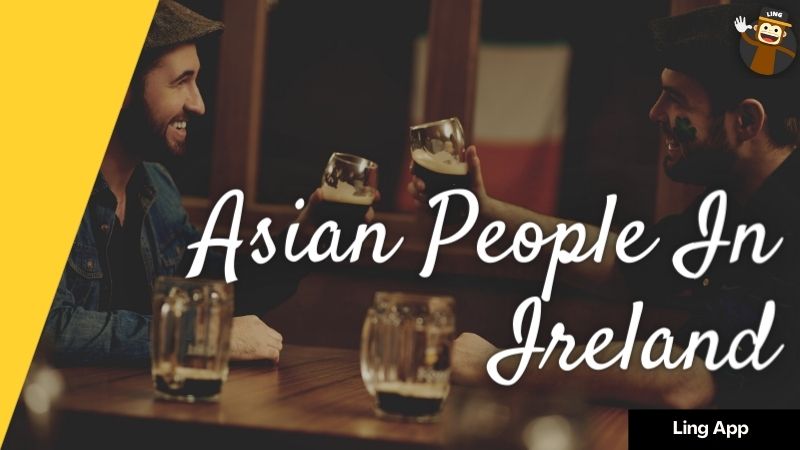
The Asian Irish community can be categorized into two major ethnic groups, i.e., the Chinese Irish society and the non-Chinese Asian community.
The community of southern Asian descent is quite a well-established and well-settled community in Ireland and is reported to be the fastest growing ethnic group.
Non-Chinese Community
The non-Chinese ethnicity makes up 2 to 3 percent of the total population of Ireland. They are widely invested in Irish culture. They have embraced their traditions, language, and lifestyle to such an extent that they have succeeded in continuing their festivities well like Muslims, predominantly Pakistani, celebrate Eid ul Fitr and Eid ul Adha similarly the Indians celebrate their festivals like Diwali.
The Asian communities managed to retain their native languages alive. Common languages besides Gaelic include Hindi, Punjabi, Bengali, English, Urdu, Tamil, Malaya, etc.
The religions include Islam, Hinduism, Sikhism, and Christianity.
History
The history of South Asian migrants dates back to the eighteenth century. Many Irish men used to work for easy India company in India, and theories say that some Irish men retired to their homeland accompanied by their Indian and Muslim servants, thus settling in Ireland.
Some others might have taken their wives, mistresses, and even the children back home and thus settled and integrated into their community, thus making quite a sizable community there.
Purpose Of Immigration
Immigration has continued from the eighteenth century until now, but now the purpose of immigration is all related to education and medicine. Many professors in Irish universities are Indian and Pakistani locals who teach the languages similarly. Many doctors prefer Ireland over other countries because of its salary packages, living standards, and opportunities to continue their practices in the western world.
Others work in the business, industry, and construction setups because of their attractive economic opportunities.
Chinese Asian
Chinese make up the most significant minority or ethnic group of Asians in Ireland. They consist of about 60,000 Chinese.
The Chinese immigrated to Ireland in two waves. The first Chinese immigrants started in the 1950s when people from Hong Kong entered for business purposes. They owned catering and food businesses and then settled there for good.
The second wave of immigrants began in the 1990s when people started visiting Ireland for education and other professional purposes and then settled there. Most second-wave ex-pats are the students who got attracted to Ireland for their degrees and started dropping there because of the suitable work environment and the attractive opportunities.
Problems
The Chinese Asians saw more problems compared to other Asians like Pakistanis, Indians, Bengali, etc., to adapt to the new state and culture because of the language barrier. Chinese are not fluent in spoken English, making them distant from the natives and other emigrant ethnic groups. Still, they are now getting more comfortable because they have adapted to the social norms and attitudes of the Irish and get more acceptable behaviors to form the host society.
4. White Irish
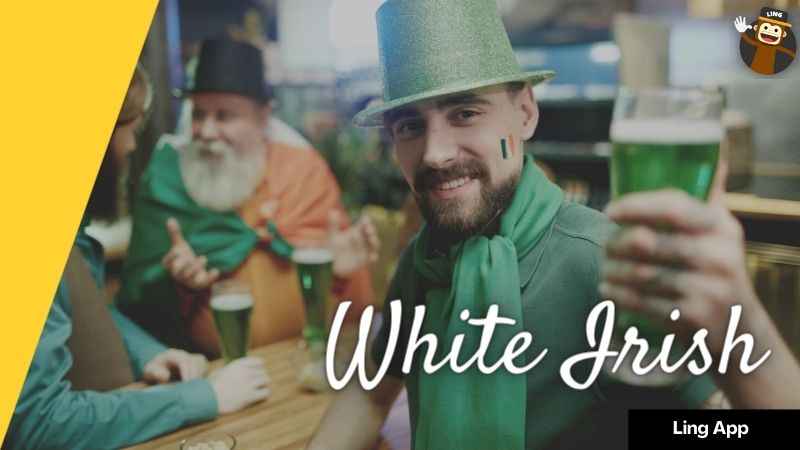
White Irish is the largest ethnic group out of all the ethnic groups in Ireland. It makes up 82% of the population of Ireland. They are native to the island and share common culture, language, religion, and history.
People of white background make up the majority because Ireland is a member of the European community, thus making the people of Ireland the citizens of the European Union like the Scottish.
Another essential aspect that contributes to their identity as white is that most of the population has Gaelic, Scottish, British, Welsh, and Celtic ancestry.
Language And Religious Association Of Whites
Gaelic is their national language, and it remained so until the British invasion. When the Britishers came and settled in Ireland, they adopted English as their second and state language, so now Gaelic and English are the two national languages of Ireland.
Ireland has been divided into Northern Ireland and the Republic of Ireland.
Catholicism is the state religion of the Republic of Ireland, where more than 75% of people are adherents of the Roman Catholic faith. At the same time, northern Ireland sticks to the protestant groups though there is quite a large community of Catholic followers too.
Celebrating festivals like Christmas is quite prevalent in Ireland.
Northern Ireland considers itself a part of the British Empire and follows the British nationality act; thus, the northern Irelanders are deemed British by birth, and they can identify as British, Irish, or both. So it can be claimed that the Irelanders of the north are white by birth.
Final Thoughts
Ireland is one of the most diverse states in the world, and this statement finds consensus in the ethnic groups dwelling in the state. Ireland has been an abode for groups of different nationalities for centuries. These groups slowly and gradually assimilated and merged into the mainstream Irish society to such an extent that it has become hard to distinguish between the Irish locals and the foreigners.
The earlier invasion of Ireland by the Gaels, Vikings, Romans, Scottish, and Britishers saw a notable change in the country’s culture and traditions including Irish Art and Irish clothes. These groups then settled on the island of Ireland and have now become the indigenous ethnic groups commonly termed white Irish.
Other Irish communities include people of American, African Asian, and further European descent, making up ethnic groups like people of white background like Welsh, Scottish, British, etc., black Irish predominantly African, Chinese Asian Irish, non-Chinese Irish, Irish travelers, and some of the mixed experiences.
Wrapping Up
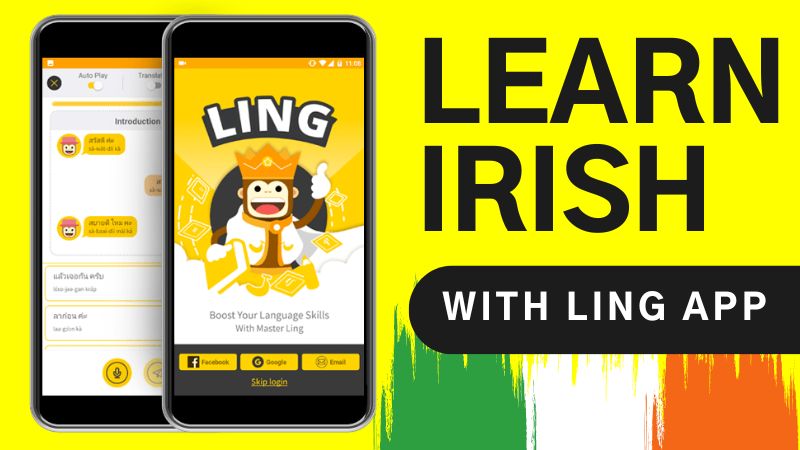
Congratulations on unlocking another achievement by learning about the Irish ethnic groups. If you are seeking to learn the Irish language then try Ling App. Ling is a great App that provides knowledge about many languages.
So, what are you waiting for? Download the Ling App now from Google Playstore or App Store and start learning the Irish language now!!!
Happy Learning!
